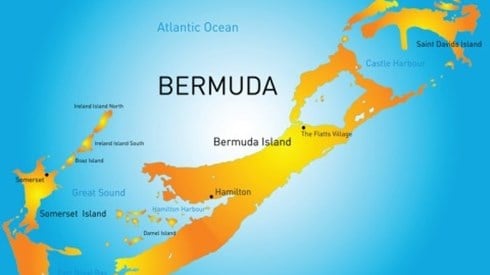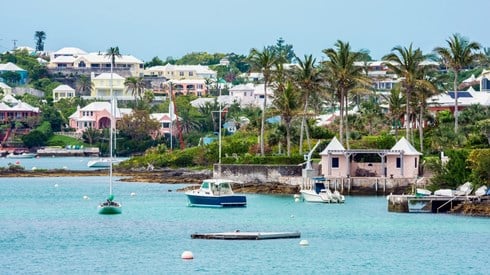Growing Focus on ESG Factors Creates Risks, Opportunities for Captives

September 28, 2022

Environmental, social, and governance (ESG) factors are becoming increasingly significant for businesses of all sorts. As they do, the impact of ESG—and opportunities ESG considerations might present—are likely to become a growing factor for captive insurance companies as well.
Speaking during a session titled "Using Captives for ESG Initiatives" at this year's Bermuda Captive Conference, Sherman Taylor, head of capital markets, Bermuda, at Ocorian, said, "ESG creates both risks and opportunities for the insurance industry, and those risks and opportunities extend to captives as well."
Mr. Taylor said he sees ESG as "an investor-driven trend that judges companies on environmental, social, and governance factors.
"There are lots of questions that still need to be answered," he said. "ESG certainly has its detractors, as we've seen recently in the media."
"We often hear climate, sustainability, ESG all sort of used interchangeably," said another panelist, Andy MacFarlane, head of climate at AXA XL. "Sustainability, for me, is really an ideal or the framework that we have for thinking about the future. And ['E,' 'S,' and 'G'] are the considerations that we need to balance as a society as we pursue that growth, development, and improved quality of life for all of us."
From an insurer's or reinsurer's perspective, the "E" has to do with the impacts of changing climate and natural catastrophes, Mr. MacFarlane said. The "S" has to do with labor standards, human rights, and changing demographics. For the "G," the focus is on boards, board diversity, and even data privacy, he said.
"If you think about the changes that are going to happen in terms of the corporate risk profile of some of the biggest companies in the world, those changes are going to trickle down to the captive," said Mr. Taylor. "So, I think the captive is going to get pulled along with all of these changes on a proportional basis."
Under the "E"—environmental—category, insurance companies potentially face physical risks, transition risks, and liability risks, Mr. MacFarlane said.
"Within the physical risk side of things, it's awfully important to understand that the drivers of the physical risks we see are not only changes in the hazards we see, changes in the weather events, but also exposure accumulation and the extent to which we as a society are adapting or failing to adapt," he said.
The transition risks—exposures that emerge as insurance company clients or captive parents move to a lower carbon economy—will be driven both by regulatory requirements and consumer preferences, Mr. MacFarlane said.
And the liability risks related to environmental factors will emerge from such things as growing regulatory requirements to disclose climate exposures, potential liabilities around "greenwashing," and litigation against some businesses alleging direct causal impact on climate change.
Maura McGuigan, senior director and head of criteria at A.M. Best, said Best looks at physical, transition, and liability environmental risks in considering captives' and traditional insurers' ratings.
Captives and traditional insurers should be looking at changes in physical risks and their potential financial impacts, Ms. McGuigan said.
"The reasons that insurers and captives should be thinking about that is because it can result in material consequences on an entity's capitalization and it can also lead to tremendous volatility in operating performance, all important things from a ratings perspective," she said, though noting that few captives Best rates are taking on natural catastrophe risks.
Considering the governance aspect of ESG, Mr. Taylor said a captive board has an essential role to play in ESG. "The governance pillar is really about how ethical the corporate governance of the captive looks," he said.
"The board and senior management of any organization, whether it's an insurance company or not, have the duty to set the tone for the entire organization," Mr. Taylor said. "I think it's fair to say that if there isn't a strong governance pillar within an organization, the social pillar and the environmental pillar will probably not be very strong."
He suggested that captives document their discussions about ESG and understand their parents' ESG strategies, and operate in a manner that is consistent with the ESG strategy of the parent.
"I think ESG should trigger a fresh look at the composition of the board," Mr. Taylor said. "Because we need to ensure that the board is composed of people who understand ESG and the ESG strategy of the parent and understand how the captive can be used to help achieve the ESG strategy of the parent."
Ms. McGuigan suggested there's a connection between strong governance and insurers' performance.
"We expect that insurers that demonstrate these strong corporate governance practices will likely be better able to manage their risks and opportunities over the long term in general and will be less likely to experience higher levels of volatility," she said.
"Good governance and risk management, they are the foundations of a good captive," Ms. McGuigan said. Captives are designed to solve problems for their parent company, she noted, "And they're well positioned to act as a focal point to identify ESG issues and implement and document a company's strategy for addressing them."
Also, captives are used by their parents to underwrite new and emerging risks for their parents, Ms. McGuigan said, "And many of those risks are associated with ESG." Many of the risks coming from ESG have no risk transfer option presently, so a captive might be used to help gather information about that risk and then provide an underwriting solution.
Ms. McGuigan also stressed the importance of captive insurance companies considering the ESG positions of the various third parties with which they interact.
"The ESG of your counterparties can affect your reputation, so you've got to be aware of what your counterparties are doing, whether it be your fronting carrier, your parent, or your (letter of credit) provider," she said.
Séadna Kirwan, risk advisory director at Aon Bermuda, moderated the session.
September 28, 2022







